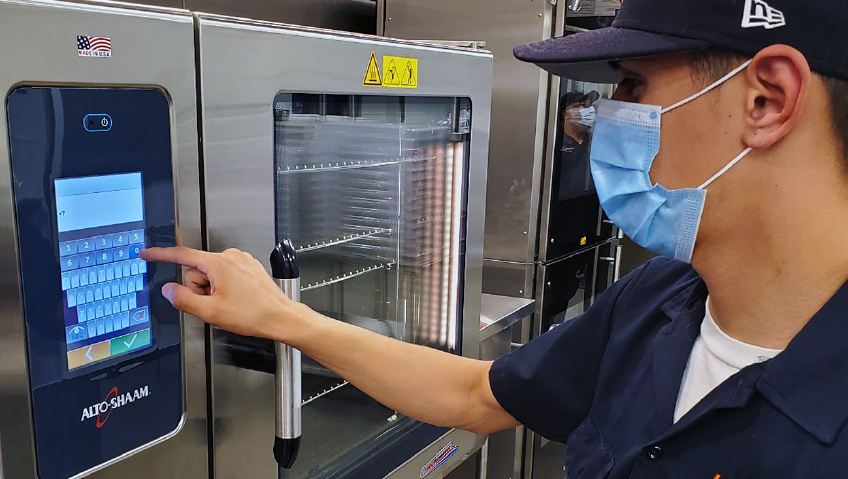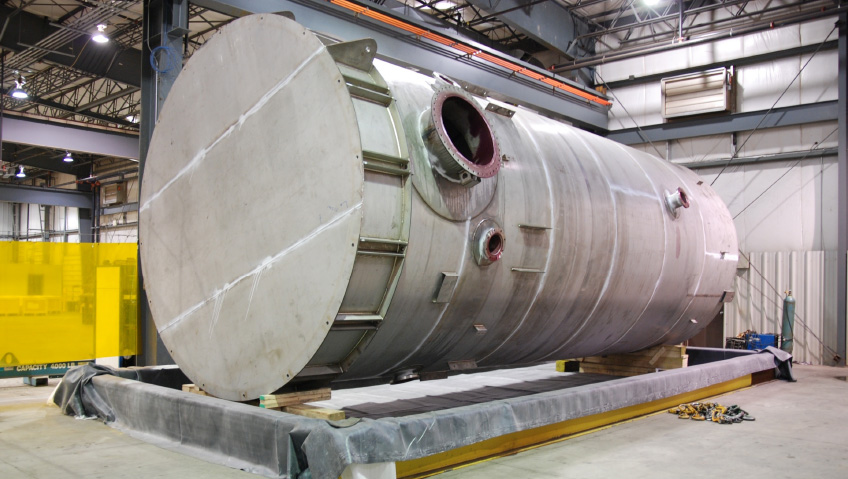The pandemic continues to affect our world, but business infrastructure must endure. While restaurant sales drop, grocery chains across North America are feeling the strain, and maintaining the complex machinery used in food service is a full-time job.
California-based United Service Technologies (UST) has been a pioneer in machine servicing for over twenty-five years. In bringing together service and technology, the company intends to live up to its name and help foster the next generation of American technicians.
Like many businesses, this one started as a way to solve a single problem. Owner and Vice President Rodger Smelcer formed the company with partner Robert Heidkamp in 1995 to eradicate the multiple operations and service fees that manufacturers imposed on grocery machine repair. “Our idea was to eliminate one of these fees and service both with one technician, independent of the manufacturer.” This way, the two men thought, their businesses could aid grocery chains in saving money and decreasing machine downtime.
The fledgling company had modest beginnings, initially servicing commercial food equipment in 21 supermarkets across Southern California. “After testing our idea, we showed we could save them over 24 percent overall,” Smelcer remarks. News of its success spread rapidly, and the company more than quadrupled in size in its first two years, performing over $1.5 million worth of service in its second year alone. Since then, UST has developed fixed-price and tiered service models, and Smelcer says that this is unique among grocery machine repair businesses. “It’s a big differentiator between us and our competition.”
Faced with the limits of mid-nineties computers, United Service Technologies adapted quickly, a trait that became its trademark. “We built our own internal field service management software that we managed all of our calls with,” Smelcer says, and this enabled the company to track repair results in real time. Over the past five years, it has been employing advanced field service management software using artificial intelligence (AI), augmented reality, and mixed reality. “We’re uniting service and technology to give our customers the best of what we can do with service with technology attached to it,” he adds.
Today, UST services grocery stores close to its headquarters in Southern California, the grocery store density capital of the world; however, its reach also extends throughout the Southwest to Arizona, Nevada, Texas, and North with new inroads in Idaho. In total, it enjoys $19 million in revenue annually.
The company prides itself on its single-mindedness, servicing grocery food preparation equipment with no involvement in refrigeration or heating, ventilation, and air conditioning (HVAC). It has carved out its place and intends to remain there. “We’ve really narrowed into what we do well, which is hot-side food equipment service in the grocery industry,” he says. “You’d be hard-pressed to find another company in the country that has that same focus.”
A key reason for this niche is the stability of the grocery sector itself. Smelcer relates that, early on, he and his partners calculated that the United States experiences an annual population growth of roughly four percent. With this guaranteed annual expansion in its customer base, UST could predict steady revenue increases. “We had four percent growth built in,” he says, elaborating that while businesses and technologies may rise and fall, “you have to eat.”
As part of its mandate, United Service Technologies continues to implement the newest technology and push the bounds of existing technologies to fit them to its business model. The Help Lightning app, designed for iPads but also compatible with Android devices, allows technicians on the job to use practical augmented reality to present a clear picture to any other company employee. This cutting-edge virtual presence means that its more experienced technicians can take a backseat digital support role, using their experience as needed to guide newer technicians in the field.
Using mixed reality, digital support technicians can superimpose their own hands into live video, demonstrating exactly what to do and how to do it. “Both the trainee and the trainer could hold up a bolt in real-time and compare them,” Smelcer says.
In addition to this existing tool, UST is using no-code application software to create custom service apps for its technicians. Without requiring coding experience, the company’s service professionals can apply their experience and build programs best suited for changing service environments. It also uses AI technology to further augment its service technicians. When calls come in and technicians answer customers’ questions about the nature of the issue, the AI indicates parts that could fix the problem and calculates the probability of success. Eventually, the AI will reach a consensus and find a part guaranteed to fix the problem. “We can send the right technician, with the right part, to get the job done,” Smelcer states, achieving what he calls a “first-time fix.”
He is particularly proud of this utilization of experienced technicians in digital support roles, so older workers do not ‘age out’ of the workforce and trains the next generation of American technicians. The company’s average technician is 27, far lower than typical for the industry, a reflection of its approach. “We’re utilizing all this technology, and they’re attracted to that,” he says of younger applicants.
Through enhancing technicians’ resumes with experience in the latest skills, he believes that the company can build a new generation of skilled labor. He dismisses the possibility of employees gaining skills and then departing for greener pastures, placing his faith in the promise of constant development to ensure low turnover. Older employees’ role as digital support ensures they pass on their skills.
United Service Technologies uses the recording app Marco Polo for its technicians to record and post video content as part of this appeal to younger workers. “Our technicians in the field actually create content of the machines they’re working on every day, and then we take that content and turn it into training, through our learning management system,” Smelcer says. He believes that this encourages the company’s younger demographic – over 70 percent of staff are millennials.
Smelcer foresees a large potential influx of new applicants from the automobile and personal vehicle sector as it increasingly switches from the combustion engine to electric-powered vehicles. The service industry will be forced to adapt, and those mechanics, while not having the skills to service electric vehicles, will be perfect additions to UST’s business model. “We take all those displaced people and fill the gap,” he says. “All of those trained mechanics have to go somewhere.”
Industry, in general, is automating, and United Service Technologies is beginning to see itself as a “healthcare provider for robots,” he says. “We have programs in place in our business that line up with healthcare-type names.” Total Care, for example, offers parts and care for a fixed price – Smelcer jokes that it is similar to a health maintenance organization. “We provide parts, labor, and travel for everything you need.” This custom model of service is distinctive in the industry and promises to expand as technology progresses.
Its Personal Care model is largely the same as its more comprehensive cousin but adjusts bi-yearly based on usage. “You can, as a company, do things to affect your total cost, and the way we achieve that is by tracking avoidable costs,” Smelcer explains. “By tracking those, and making the customer aware of some of the solutions to solving those things we’re tracking, they can affect their total costs.”
UST’s forward-thinking approach, as well as its chosen sector, has supported it in not merely surviving but growing in 2020. Given the wide service area, Smelcer says that company leadership knew it was only a matter of time before the virus affected it and so put pre-emptive measures in place. “We weren’t running around crying wolf, but we were saying ‘the sky might be falling’ before the sky was actually falling,” he says. These measures and constant communication with customers have kept employees safe and on the job.
Thanks to United Service Technologies’ resiliency and the growth in the grocery store sector sparked by the pandemic – over 30 percent in 2020, according to Smelcer – the company is expanding smoothly, and its embrace of technology means that new hires can be trained much more quickly. The union of artificial intelligence and augmented reality, he declares, is a powerful one. “Through those two things, we can ramp up a new technician from zero productivity in less than three months, with no prior experience in the industry at all.”
As United Service Technologies celebrates its twenty-sixth year, the company has certainly found its strength and is working to move forward. By bringing together experienced staff and innovative technology, it is working to forge the next generation of American technicians and service personnel. American industry is automating at an accelerating rate, and these may very well be the skilled workers needed for the jobs of tomorrow.






